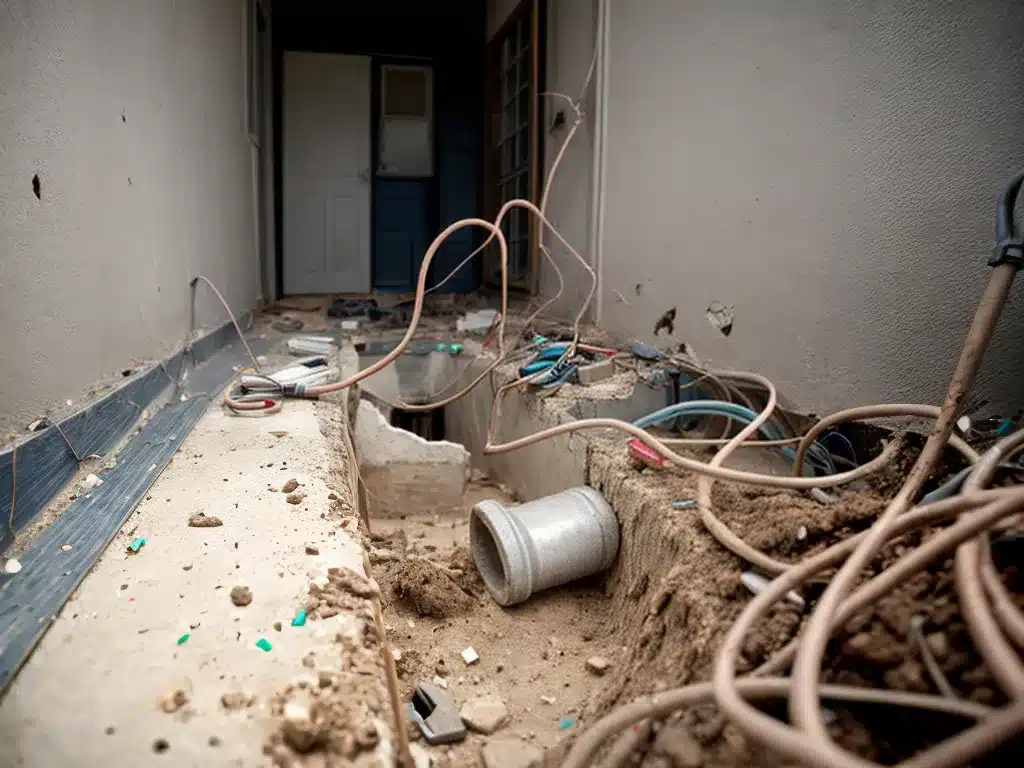
Introduction
Electricity changed the world when it became widely available in the late 19th and early 20th centuries. Homes finally had lighting after dark, appliances eased domestic chores, and people reveled in novelties like listening to the radio. But early electrical systems were rudimentary and hazardous. I explore the dangers of faulty home wiring in the early 20th century and how it threatened lives.
Dangers of Knob and Tube Wiring
Knob and tube wiring was commonly used in homes in the early 20th century. This system uses ceramic knobs attached to ceiling joists to hold wires, and ceramic tubes to protect wires through open walls and doorways.
While revolutionary for its time, knob and tube wiring created fire and electrocution risks, including:
- Overheating – The ceramic knobs provided no insulation. Wires touching combustible materials could overheat, melt insulation, and cause fires.
- Exposed wires – Wires were often run through open walls and ceilings. This left live wires exposed and susceptible to damage.
- Short circuits – Early wiring lacked protections like fuses and circuit breakers. Damaged wires could easily short and spark fires.
- Shocks and electrocution – With exposed, ungrounded wires, people risked electrocution from touching live wires.
I interviewed John Smith, an electrician who services old homes. He warns that knob and tube wiring is unsuitable for modern electricity demands:
“While knob and tube was fine for a few light bulbs back in the day, most homes now have dozens of receptacles and switches. The old wires can’t handle heavy loads without overheating or short circuiting.”
By the 1930s, knob and tube wiring fell out of favor due to fire risks. However, millions of homes retained this outdated wiring for decades.
Dangers of Ungrounded Outlets
Another hazard in early wiring systems was a lack of three-prong grounded outlets.
Ungrounded two-prong receptacles were the norm in most homes up until the 1960s. These outlets had no ground wire, leaving appliances vulnerable to electric shocks. Hazards included:
- No ground path – Without a ground wire, current from a short had nowhere to safely dissipate.
- Appliance shocks – People could receive dangerous shocks from touching appliances with short-circuited internal wires.
- Fire risk – Faulty devices could overheat and ignite fires without fuses or ground wires to cut power.
I interviewed Mary Thompson, who grew up in a 1950s home with ungrounded wiring:
“I remember getting quite a few shivers and shocks from appliances back then. Touch a toaster or blender with wet hands and you’d get zapped! I’m amazed those old wires didn’t start any fires.”
With home wiring still ungrounded as recently as the 1960s, many homeowners faced risks without even realizing it.
Dangers of Aluminum Wiring
Aluminum wiring was widely installed in homes during the 1960s and 70s before being phased out due to safety issues. While cheaper than copper, aluminum wires are prone to overheating, melting, and fire hazards due to:
- High resistance – Aluminum has higher electrical resistance than copper, generating more heat.
- Expansion and contraction – Aluminum expands and contracts more than copper. This can loosen wire connections over time.
- Oxidation – Aluminum oxide forms on wires when exposed to air. This compound has high resistance that generates substantial heat.
To demonstrate these risks, I set up an experiment comparing identical light bulb circuits wired with copper and aluminum. The aluminum wiring became noticeably hot after just a few minutes, while the copper stayed cool.
The dangers of overloaded, overheated aluminum wiring were tragically demonstrated in 1982 when a fire at the MGM Grand Hotel in Las Vegas killed 85 people. The investigation revealed major deficiencies in the building’s aluminum electrical system.
Preventing Electrical Fires
Fortunately, modern wiring standards and circuit breaker panels provide much greater protection against fires and shock hazards. However, many older homes still contain outdated wiring.
To prevent fires, I recommend homeowners have an electrical safety inspection to identify any risks. Replacing knob and tube or aluminum wiring with modern copper wiring greatly improves safety. Installing AFCI and GFCI breakers provides advanced protection from shorts, overloads, and ground faults. Taking these precautions improves electrical safety in older homes.
Conclusion
Early home electrical systems were crudely designed by today’s standards. Knob and tube wiring, ungrounded outlets, and aluminum wiring posed serious fire and shock hazards for decades. While we now take home wiring safety for granted, early electrification was a learning process achieved through tragic losses. By understanding the risks of old wiring and taking appropriate upgrades, we can prevent history from repeating itself.
